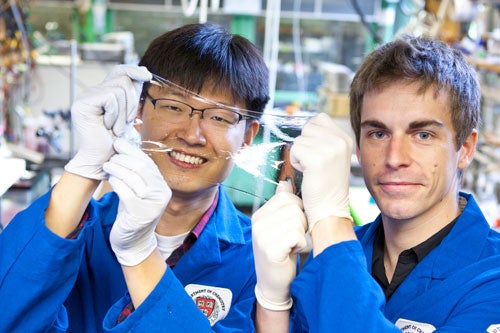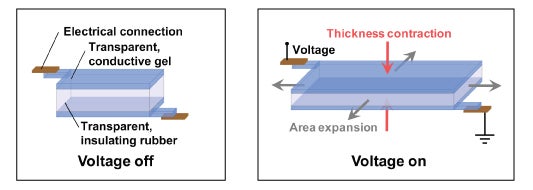Transparent rubber 'ionic' speaker paves the way for 'soft machines'
New invention demonstrates the possibilities of ionic conductors, allowing for stretchable, see-through electronics.
Your support helps us to tell the story
From reproductive rights to climate change to Big Tech, The Independent is on the ground when the story is developing. Whether it's investigating the financials of Elon Musk's pro-Trump PAC or producing our latest documentary, 'The A Word', which shines a light on the American women fighting for reproductive rights, we know how important it is to parse out the facts from the messaging.
At such a critical moment in US history, we need reporters on the ground. Your donation allows us to keep sending journalists to speak to both sides of the story.
The Independent is trusted by Americans across the entire political spectrum. And unlike many other quality news outlets, we choose not to lock Americans out of our reporting and analysis with paywalls. We believe quality journalism should be available to everyone, paid for by those who can afford it.
Your support makes all the difference.Researchers from the University of Harvard have demonstrated an ‘ionic’ speaker made from a thin sheet of rubber.
In a video released by the university (see above) the transparent disc was hooked up to a laptop and used to play the ‘Morning’ prelude from Peer Gynt.
The speaker demonstrates the possibilities of using ‘ionic’ conductors, an alternative to regular electronics in which the electrical charge is carried by ions rather than electrons.
Ions are relatively large and heavy compared to electrons, and ionic systems are typically difficult to work with. This new proof of concept promises that ionic conductors might have practical applications after all.
These conductors offer several advantages when compared to standard electronics: they can be stretched to many times their normal are without increasing resistivity (a problem for regular stretchable electronics); they can be entirely transparent; and the gels they are constructed from are biocompatible, meaning they would be easy to incorporate into biological systems.
“The big vision is soft machines,” says co-lead author Christoph Keplinger, who worked on the project as a postdoctoral fellow at Harvard SEAS and in the Department of Chemistry and Chemical Biology. “Engineered ionic systems can achieve a lot of functions that our body has: they can sense, they can conduct a signal, and they can actuate movement. We’re really approaching the type of soft machine that biology has to offer.”

“We’d like to change people’s attitudes about where ionics can be used,” says Keplinger. “Our system doesn’t need a lot of power, and you can integrate it anywhere you would need a soft, transparent layer that deforms in response to electrical stimuli—for example, on the screen of a TV, laptop, or smartphone to generate sound or provide localized haptic feedback—and people are even thinking about smart windows. You could potentially place this speaker on a window and achieve active noise cancellation, with complete silence inside.”
The finished speaker used a high-voltage signal to vibrate the rubber, creating sounds that spanned the entire audible spectrum – from 20 hertz to 20 kilohertz.
For more details on the work, see the official press release from Harvard University.

Join our commenting forum
Join thought-provoking conversations, follow other Independent readers and see their replies
Comments